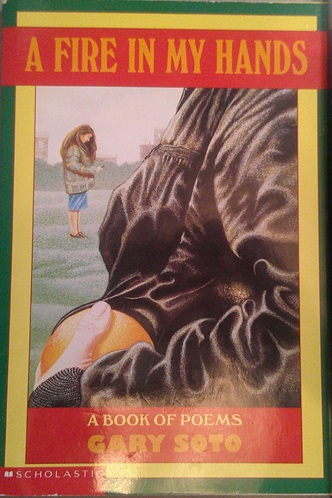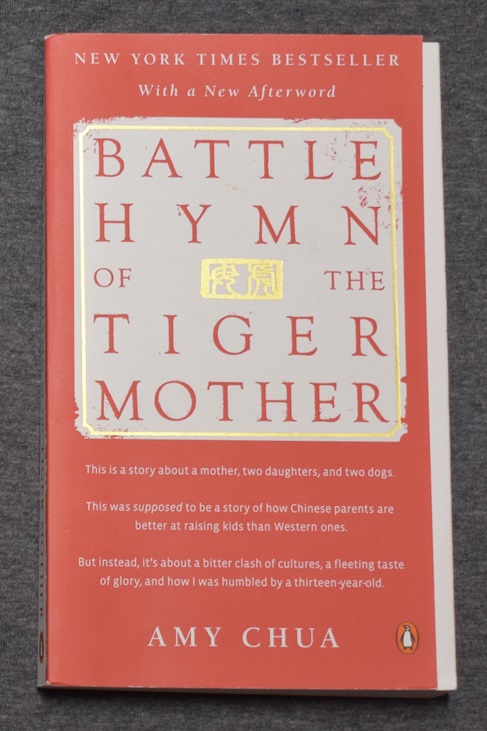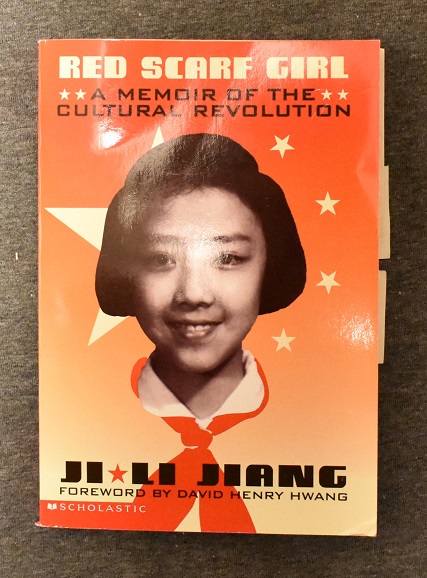A Fire in My Hands: A Book of Poems by Gary Soto, illustrated by James M. Cardillo.
Scholastic, New York, 1990.
Poetry, 64 pages.
Lexile: NP . (What does NP mean in Lexile?)
AR Level: 5.4 (worth 1.0 points) .
NOTE: See review for age appropriateness.
A collection of Gary Soto’s poems about growing up Mexican-American in the San Joaquin valley.

This was languishing in a little free library we frequent, untouched for far too long. I will probably release it back into a different free book environment if none of the kids I know want it.
With only 23 poems this is a slim volume. I thought at first that all or most were written for this book, but they are reprinted from other books or magazines. The majority come from his collection Black Hair, but some are from other sources.
The book also includes a forward, Q&A, and a few lines introducing each individual poem. That helps give context to the poems, adds more of a narrative flow to the book, and also helps make it a bit more substantial. It makes the collection more useful for teachers too.
Continue reading “Review: Fire in My Hands”







